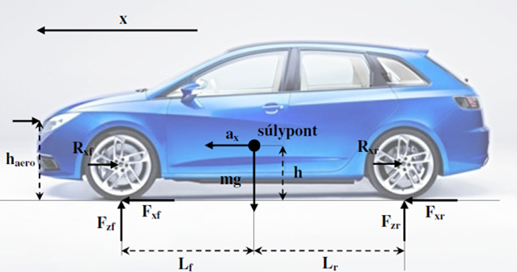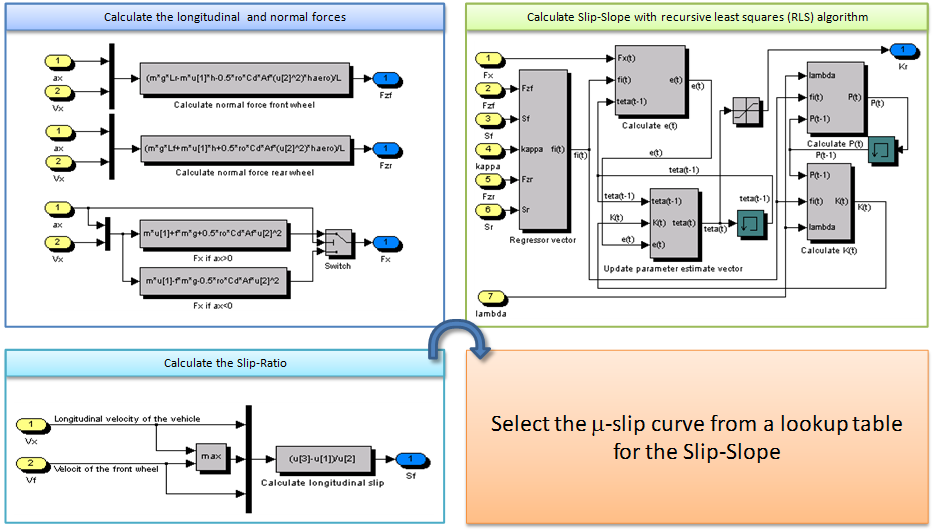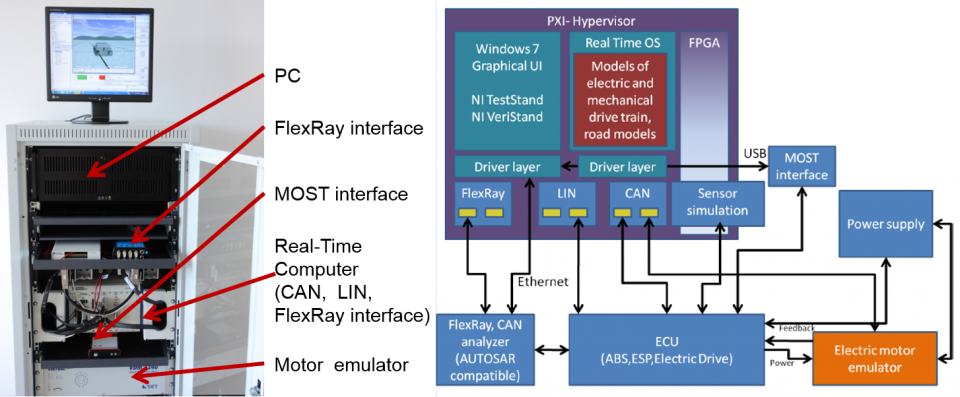Motivation
Satisfying the ever increasing needs for safety and environmental issues the electronic control units (ECU) of today vehicles becomes more and more complex. One of the most important parameter to improve the reliability and robustness of electronic control units is the accurate value of road-tire friction coefficient.
Aim of the research
- More accurate estimation of the friction coefficient
- Investigation of the on-line estimation methods
- Develop a Matlab/Simulink model library
- Execute the algorithms with measured and simulated data
- Investigate the possibilities of employing new methodologies
- Create a simulation and validation environment
Active safety system ECU-s use these parameters:
- Stability control systems (ABS, ESP, ESC)
- Traction control systems
- Adaptive cruise control (ACC)
- Collision-avoidance systems
- Improve active safety systems
- Anti-lock Braking System
- Electronic Stability Program
- Traction Control System
- Real-time estimation algorithms
- Slip-slope method based on longitudinal vehicle dynamics
- Cornering stiffness method based on lateral vehicle dynamics
- Burckhardt method based on wheel dynamics

Slip-slope method
The slip-slope method utilizes the relationship between normalized longitudinal tire force and slip ratio to determine the tire-road friction coefficient. This is a single-track model.
Workflow diagram for the Slip-slope method

Block diagram for Slip-slope method

Future developments
Increasing the accuracy of the estimation algorithms Kalman filter-based friction coefficient estimation Setting of regression parameters of Cornering stiffness method with analytically (Δαmin, window-with) Methods based on regression analysis:
- LMS (Least Mean Square)
- RLS (Recursive Least Square)
- Application of real time simulator for validation of the development and results, and HIL (Hardware In the Loop) experiments
Prototype validation (before integration) Testing/development of new functions
- Elaboration of a new algorithm

